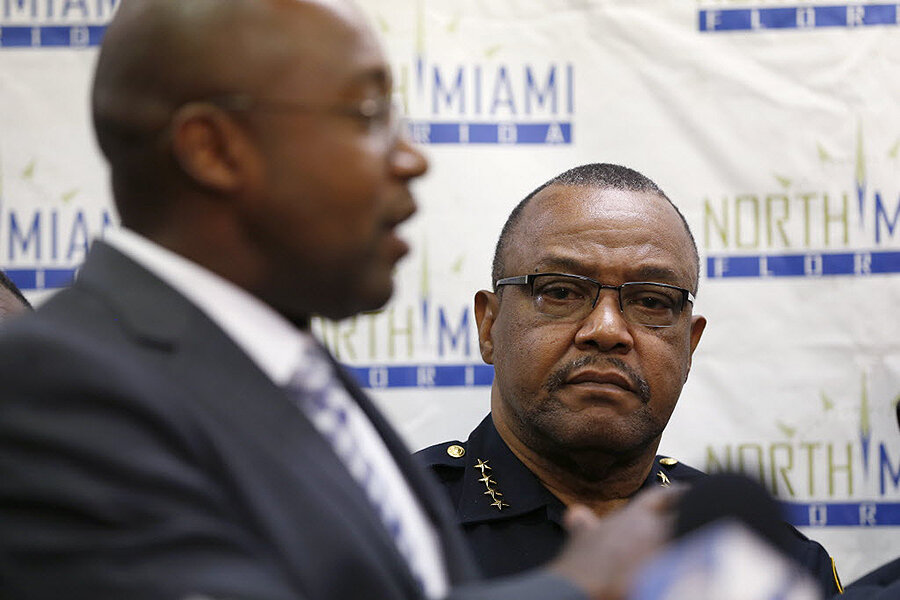Shooting of autistic man's caretaker renews pain of recent police violence
Loading...
A North Miami police officer shot a black man caring for a man diagnosed with autism on Monday, sparking further discussion not only of painfully strained perceptions between police and the black community, but also interactions with the disabled and mentally ill.
Police were called while Charles Kinsey, a caretaker at a group home for the disabled, was working to calm a man diagnosed with autism who had run away and sat in the street, blocking traffic. Mr. Kinsey lay down in the street with his hands up, trying to negotiate with both anxious police and his patient, but an officer shot three times, hitting him once in the leg, according to The Miami Herald.
“The straw that really breaks the camel’s back, that makes it even more frustrating, is that after my client was shot, they handcuffed him and left him on the hot Miami summer pavement for 20 minutes while fire rescue came and while he was bleeding out,” Kinsey's attorney Hilton Napoleon told The Washington Post, saying he hoped to negotiate a settlement with police department.
Officers responded to a call of an armed suspect threatening suicide, the North Miami Police Department said in a statement. The officer who fired shots has been placed on administrative leave, and the department has launched an investigation into the shooting.
In a cellphone video taken moments before shots were fired, a black man is lying on the street with his hands up behind another man who is holding an object in his hand.
"All he has is a truck. A toy truck. I'm a behavior therapist at a group home," the man says in the video.
Kinsey was trying to assist a 23-year-old patient who is non-verbal and "relatively low-functioning," the group home's manager told WSVN.
"I was really more worried about him than myself," Kinsey told reporters.
In many cases, police feel ill-equipped to handle interactions with people with mental disabilities or mental illnesses. Yet some departments are experimenting with new approaches to support non-violent, de-escalating police response in such situations.
In Los Angeles, for example, the police department has partnered with the County Department of Mental Health, becoming "a nationally recognized model," as The Christian Science Monitor reported last June:
By partnering beat cops with mental health clinicians, the [Los Angeles Police Department Mental Evaluation Unit] reined in costs associated with frivolous 911 calls. It also connected thousands of individuals with counseling and support, reducing incidences of force used on individuals with mental illness and alleviating the burden on overcrowded emergency rooms and the criminal justice system....
The LAPD deploys doctors, nurses, and social workers alongside patrol officers. At any given time, there are four or five officer-clinician teams patrolling together. For officers responding on their own, clinicians staffing a MEU triage desk are available 24 hours a day to consult.
Disability, however, only adds one more layer to often-tense relationships between police and the communities they work in, particularly in respect to debates about racial bias. National conversation about policing has been particularly fraught in the past month, following fatal police shootings near St. Paul, Minn., and Baton Rouge, La., as well as the deadly shootings of police officers in Dallas and Baton Rouge, La.
On Sunday, President Obama condemned the killing of law enforcement officers, days after the Baton Rouge shooting, telling Americans the nation needs to "temper our words and open our hearts."
"Only we can prove, through words and through deeds, that we will not be divided," he said. "And we're going to have to keep on doing it again and again and again. That's how this country gets united."
This report contains material from Reuters.
Editor's Note: This article has been corrected to clarify the full name of the North Miami Police Department.






